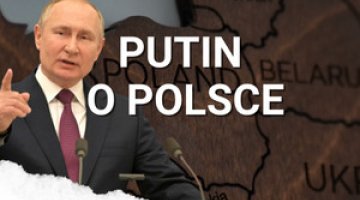America First: US halts arms deliveries to Ukraine
On 1 July, Politico reported that the Pentagon had halted some deliveries of US weapons to Ukraine. The following day, a Pentagon spokesperson confirmed the report. According to Ukrainian sources, the decision affects all categories of weaponry, including PAC-3 missiles for Patriot air defence systems, 155 mm artillery shells, GMLRS missiles for HIMARS systems, Hellfire anti-tank guided missiles, AIM-7 Sparrow and Stinger anti-aircraft missiles, as well as spare parts. The suspension forms part of the Department of Defense’s ongoing Capability Review, which encompasses deliveries not only to Ukraine but also to other recipients of US military aid. The department is currently reviewing this assistance to ensure it aligns with the priorities of the new administration. The duration of the suspension remains unclear. The Pentagon has stated that it will develop various options for continued support to Ukraine, in line with President Donald Trump’s overarching goal of ending the war as swiftly as possible.
The Ministry of Defence of Ukraine has not received any official information regarding changes to the delivery schedule; it has therefore requested clarification from the US side. The Ministry of Foreign Affairs has summoned the chargé d’affaires of the US Embassy. President Volodymyr Zelensky has emphasised the fundamental importance of US assistance to his country’s defence capabilities, particularly its irreplaceable role in air defence. On 4 July, the Presidents of Ukraine and the United States held a telephone conversation, but President Zelensky did not announce a resumption of US deliveries following the call.
The most likely reason for the suspension of ammunition deliveries to Ukraine is the Pentagon’s ongoing review of stockpiles of selected weapon systems. However, the broader political context, marked by shifting security priorities and the Trump administration’s cautious approach to foreign assistance, cannot be overlooked. Washington’s decision caught Ukraine by surprise, prompting negative reactions, compounded by the fact that certain categories of US weapons cannot be replaced by European countries, yet remain critical to Ukraine’s defence against Russian air attacks.
Commentary
- The suspension of deliveries to Kyiv most likely stems from internal processes within the Pentagon, rather than from political pressure on Ukraine as part of Russia–Ukraine negotiations aimed at ending the war—a process supported by President Trump. A similar pause in March followed a tense meeting between the US and Ukrainian presidents in the Oval Office; it also formed part of an effort to pressure Ukraine into signing a raw materials agreement. This time, however, Washington has not articulated any new expectations. Concerns regarding the low level of US stockpiles had already surfaced within the Pentagon, particularly in connection with American air strikes in Yemen carried out between March and May this year. Further impetus for reviewing US arms stockpiles stemmed from recent Israeli strikes involving US-supplied missiles and from American support for Israel’s air defence.
- The pause in deliveries reflects a broader shift to align US actions, capabilities, and global military presence with the principles of the America First policy. It is consistent with the interim strategic guidance that Secretary of Defense Pete Hegseth issued last March, instructing the Pentagon to focus on threats in the immediate vicinity of the United States and in the Indo-Pacific, while accepting greater risk in other theatres, including Europe. The Department of Defense is also currently conducting a Global Force Posture Review; this follows a similar review of US development assistance conducted earlier this year. According to US media reports, Elbridge Colby, the Under Secretary of Defense for Policy, is responsible for the decision to halt deliveries to Ukraine. He has long advocated concentrating US military resources on the primary threat posed by China and is now leading the development of a new National Security Strategy. However, NBC has reported that Hegseth took the decision independently, noting that he has taken similar steps on two previous occassions, although in both instances his decisions were quickly reversed.
- The Pentagon’s decision to suspend arms deliveries took Ukraine by surprise. Public anger has been compounded by the fact that the move occurred amid an intensification of Russian missile and drone attacks in recent days. In particular, these strikes have affected Dnipro and Kyiv, two major cities whose air defence partly relies on Patriot systems equipped with PAC-3 missiles, which the Pentagon has now withheld from Ukraine. The situation was further muddled by positive statements and signals following the most recent meeting between President Zelensky and President Trump on the sidelines of the NATO summit in The Hague, where the two leaders discussed a number of issues, including Ukraine’s potential purchase of missiles for Patriot air defence systems from the United States. Ukraine has stressed that any delay in arms deliveries will encourage Russia to escalate further rather than halt its military operations. Kyiv had hoped that the 4 July phone call between the two presidents would lead to a change in the US position; however, although they discussed bilateral cooperation in the field of air defence, no decision to resume US deliveries was announced following the call.
- The suspended deliveries concern categories of weaponry that are critically important for Ukraine, particularly missiles for Patriot systems. A rapid resumption of these shipments is essential to maintain the country’s defensive capability at its current level, at the very least. European countries lack both a replacement for PAC-3 and the capacity to ensure stable supplies of missiles for the French-Italian SAMP/T systems previously supplied to Ukraine as an alternative to the Patriot. According to German military sources cited by Bild , Ukraine’s stock of US-made missiles is expected to last until the end of the summer. However, these sources failed to account for the possibility of Russia intensifying its attacks. Ukrainian air defence is already struggling to provide effective protection, even for the most sensitive sites—a fact confirmed by the 4 July strike on Kyiv. Ukraine’s ability to maintain a relatively effective missile shield will not only require the restoration of supplies but also their expansion, particularly through the provision of new Patriot systems equipped with the necessary number of missiles. According to Ukrainian data, these systems remain the only ones proven effective against Russian ballistic missiles.
ANNEX
US deliveries of weapons and military equipment to Ukraine
Current US military assistance to Ukraine is funded under legislation passed by the US Congress in April 2024. Aid has been delivered through two principal programmes:
- Presidential Drawdown Authority (PDA) – funds placed at the President’s disposal, which have enabled the transfer of weapons and military equipment to Ukraine directly from the stockpiles of the US Armed Forces. Under the PDA, $2.25 billion remains available, along with the implementation of support packages already announced (see ‘US military support for Ukraine: what to expect after Biden?’). According to a statement made by the Secretary of Defense last June, prior to the decision to suspend assistance, the transfer of support announced by the previous administration was expected to conclude by the end of the summer.
- Ukraine Security Assistance Initiative (USAI) – a programme that has enabled the procurement of weapons and military equipment for Ukraine from the US defence industry. The Biden administration fully allocated USAI funds, but responsibility for contracting part of the orders passed to the new administration. As a result, some of the suspended deliveries may also fall under this programme. According to data from the Department of Defense as of late March, $9.87 billion under USAI had not yet been contracted. A further $10.82 billion had already been contracted, but the relevant weapons and military equipment had either not yet been delivered to Ukraine or remained in production.





